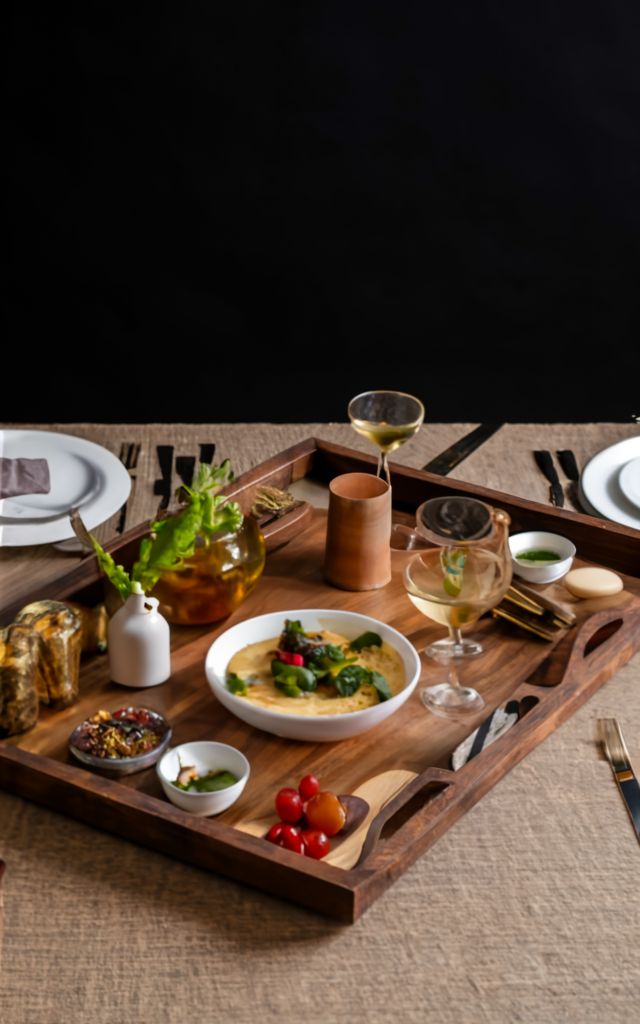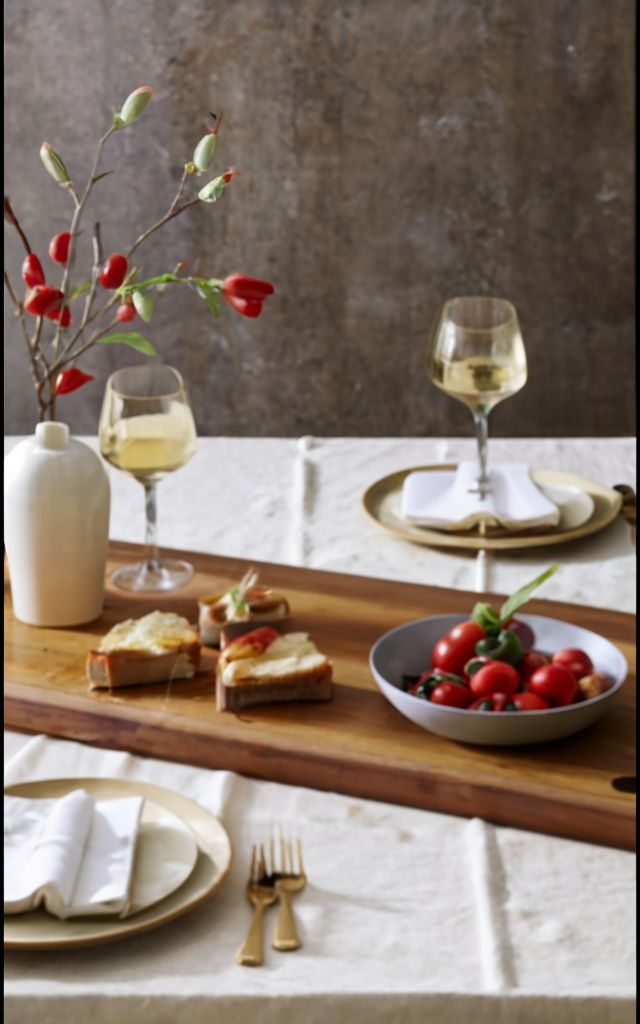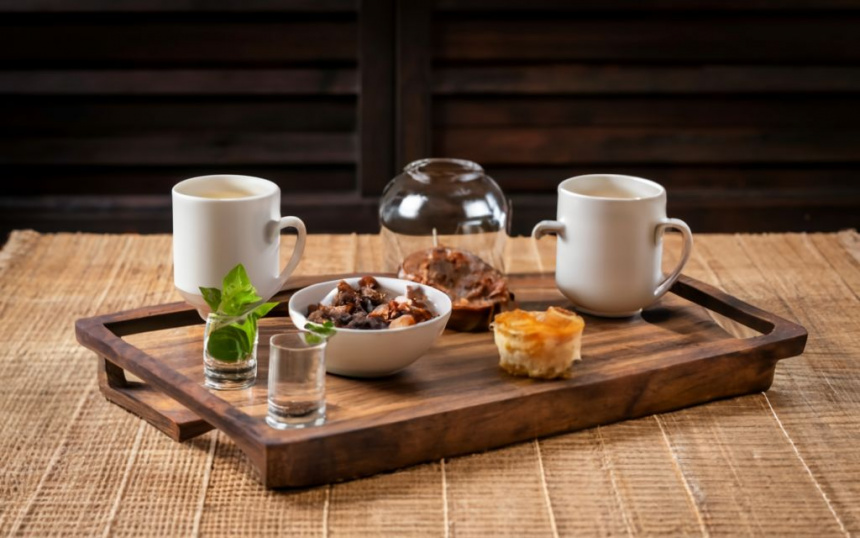Crafting Artisanal Wooden Serving Trays: From Timber to Table
In the woodworking realm, timeless artistry beckons enthusiasts to metamorphose raw materials into functional marvels of creativity. Among the vast array of woodworking projects, crafting artisanal wooden serving trays emerges as a particularly enchanting pursuit, seamlessly melding utility with imagination. Within this comprehensive guide, we shall explore the selection of timber and the fruition of the final product. Along the way, we shall provide meticulous guidance, imparting step-by-step instructions, insightful tips, and illuminating insights, all aimed at facilitating the creation of personalized wooden serving trays destined to infuse charm and sophistication into any dining table.
Understanding Timber Selection
Classifying Wood Varieties
Before immersing oneself in the woodworking milieu, one must acquaint oneself with the diverse array of wood types and their inherent traits. Wood, by its nature, may be dichotomously categorized into hardwoods and softwoods. Hardwoods, such as maple, cherry, walnut, and oak, are revered for their resilience, strength, and intricate grain patterns, rendering them excellent choices for fashioning robust and aesthetically pleasing serving trays. Conversely, though more economical, softwoods like pine and cedar may need more durability and visual allure.

Choosing the Optimal Timber for Serving Trays
The selection of suitable timber assumes paramount importance in the craft of fashioning wooden serving trays for your kitchen cabinets. Drawing from our experiential reservoir, we have discerned that each wood species boasts distinctive attributes influencing the outcome. When procuring timber for serving trays, weighing considerations such as grain configuration, hue, endurance, and aptness for food contact is prudent. Hardwoods characterized by taut, refined grains are lauded for their potency and aesthetic allure, whereas lighter-toned woods like maple and birch afford versatility in finishing and embellishment.
Crafting Artisanal Serving Trays
A Step-by-Step Guide to Crafting Wooden Serving Trays
- Conception and Deliberation: Commence by delineating your design aspirations and the dimensional parameters of your serving tray. Consider aspects such as magnitude, contour, handle placement, and any supplementary embellishments that may be envisaged.
- Preparation of Materials: Having settled upon a conceptual blueprint, prepare your materials for the ensuing endeavour. Employ a saw to hew your timber to the requisite dimensions deftly, ensuring exactitude and precision in execution.
- Construction: With your materials suitably prepared, commence the assembly process by conjoining the constituent elements of your serving tray employing wood adhesive and clamps. Exercise fastidious attention to alignment and structural robustness, ensuring a seamless fusion between each component.
- Refinement: Upon the adhesive achieving cohesion, liberate the clamps and refine your serving tray’s surface through the judicious application of abrasive materials. Efface any irregularities or blemishes, imparting a flawless finish to the wooden substrate.
Essential Implements and Components
- Cutting Implement
- Clamping Mechanisms
- Adhesive Substance
- Abrasive Material
- Finishing Agent
Enhancing Aesthetic Appeal and Durability
Refinement Strategies for Wooden Serving Trays
Applying a finishing agent or sealant is indispensable for augmenting the aesthetic appeal and endurance of wooden serving trays. From our cumulative repository of wisdom, we have discerned that diverse finishing mediums offer disparate degrees of protection and visual enhancement. Varnish and lacquer, by their tenacity, bestow upon the wooden surface a lustrous sheen, accentuating its innate splendour. Conversely, food-grade mineral oil bequeaths a more subdued, matte patina, ensuring compatibility with comestible substances. Select a finishing medium commensurate with your aesthetic preferences and protective imperatives, safeguarding against accidental spillages, stains, and moisture incursions.

Sealing and Preserving the Integrity of Wood
Sealing wood is essential in safeguarding against the pernicious effects of moisture infiltration, thereby prolonging its structural integrity and aesthetic allure. By carefully applying several layers of finishing medium or sealant to wooden serving trays, we can prevent warping, fracturing, and discoloration caused by exposure to water. Our research has shown that applying each layer systematically, allowing it to dry fully before applying the next one, creates a robust and long-lasting finish that can withstand daily use.
Exploration of Diverse Wood Varieties
Identification of Timber Suited to Serving Tray Construction
When selecting wood materials for serving trays, one must consider many factors, encompassing grain topology, tonality, and robustness. Maple, cherry, walnut, and oak are revered for their intrinsic fortitude, stability, and aesthetic allure. Each wood variant proffers distinctive attributes capable of exerting a formative influence on the ultimate character and utility of the serving tray. Ponder the merits of varied wood species, thereby attaining a synthesis between visual splendour and functional efficacy in your undertaking.
Considerations About Grain Configuration and Durability
In the process of fashioning serving trays, it is incumbent upon the practitioner to reveal scrupulous attention towards the orientation of wood grain to ensure structural coherence and sturdiness. Eschew the employment of wood fragments harbouring knots, crevices, or aberrant grain patterns, for these anomalies, may undermine the finished product’s structural integrity.
Tabular Comparative Analysis of Wood Varieties Timber Variant Grain Configuration Durability and Applicability Maple Delicate Grain Superlative Cherry Slick Texture: Superlative Walnut Opulent Texture: Superlative Oak Evident Grain Superlative
Conclusion
Crafting artisanal wooden serving trays epitomizes an enriching pursuit wherein creativity, ingenuity, and practicality converge to engender functional marvels of aesthetic splendour. By imbibing the principles of timber selection, adhering to a systematic crafting regimen, and refining the resultant artefact through the judicious application of finishing mediums, one may succeed in fashioning serving trays that epitomize elegance and sophistication. Thus, from the genesis of timber to the culmination of the culinary repast, let your ingenuity unfurl, affording life to personalized wooden serving trays that give refinement to every gastronomic occasion.
Frequently Asked Questions (FAQs)
- Can softwoods such as pine be utilized in the crafting of serving trays?
- Although softwoods are more economical, hardwoods like maple, cherry, walnut, and oak are more suited to serving tray fabrication because of their superior durability and resilience.
- What criteria should inform the selection of wood for serving trays?
- When contemplating the procurement of timber for serving trays, considerations such as grain morphology, coloration, and robustness should be deliberated. Hardwoods characterized by compact, refined grains are generally favoured for their structural integrity and aesthetic appeal.
- Which finishing medium is recommended for treating wooden serving trays?
- Many options, including varnish, lacquer, and food-grade mineral oil, are available for sealing wooden serving trays. Varnish and lacquer impart a glossy veneer, accentuating the wood’s natural beauty, while mineral oil furnishes a more subdued finish conducive to food contact.
- Can serving trays be personalized with bespoke designs?
- Undoubtedly! The realm of woodworking is replete with opportunities for creative expression. Feel free to infuse your serving tray with custom designs, engravings, or embellishments to reflect your unique sensibilities.
- How can the durability of wooden serving trays be ensured?
- By adopting a regimen of conscientious maintenance, encompassing periodic cleaning and resealing, one may extend the lifespan of wooden serving trays. Endeavour to shield them from excessive moisture or heat exposure, which may precipitate warping or degradation.

Leave a Reply